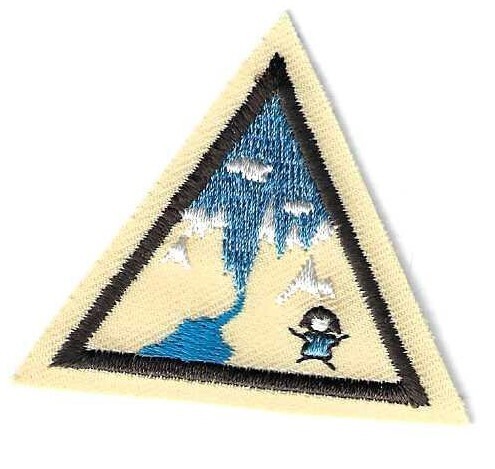Watersheds and Me, Va Skyline council own Brownie Try It (Original)
Requirements:
There are many resources available to support these Try-It activities, including your local soil and water board, water and sewer authority, and nature foundation. The Virginia Department of Environmental Quality, the Environmental Protection Agency, and the Chesapeake Bay Foundation also have great resources that relate to this Try-It.
Complete the starred activity and three others of your choice.
*1.Watersheds are also called drainage systems. Everyone lives in a watershed. Find out which watershed you live in. What kinds of plants grow around you? Which of these plants grow in or near the water? What kinds of animals (wildlife and pets) live around you? Which of these animals live in or near the water? Are there streams, rivers, ponds, or lakes near you? They are part of your watershed. Your watershed might be one that drains into the Chesapeake Bay. Look up your watershed address by using the Environmental Protection Agencyʼs website: www.epa.gov/surf/.
2.Make a collage of a watershed. Use pictures of streams, plants, and animals that you listed in activity
3.Visit a watershed. Can you find the following parts of the watershed: divide, stream/river, wetlands, stream bank, riparian buffer, and runoff areas? Can you see any of these problems: erosion, sediment, or pollution?
4.Find out ways to prevent erosion. Find out what kinds of plants are good for preventing erosion.
5.Cars and factories pollute the air. Some pollutants in the air create acid rain. Find out why acid rain hurts plants and animals in a watershed. Make a red cabbage indicator to test the waters of your watershed. Healthy water should not be too acidic.
6.Create a poster or drawing to show what you have learned and share it with your class, your troop or anyone else who needs to learn about watersheds.
7.Tour a water treatment plant located in your watershed. Find out how dirty water is made clean enough to drink.
8.Sometimes we donʼt have enough water. Americans use hundreds of gallons of water every day for cooking, cleaning, and drinking. What can you do to conserve water? Work with your family to conserve the water you use. (Conserve means donʼt waste it!)
